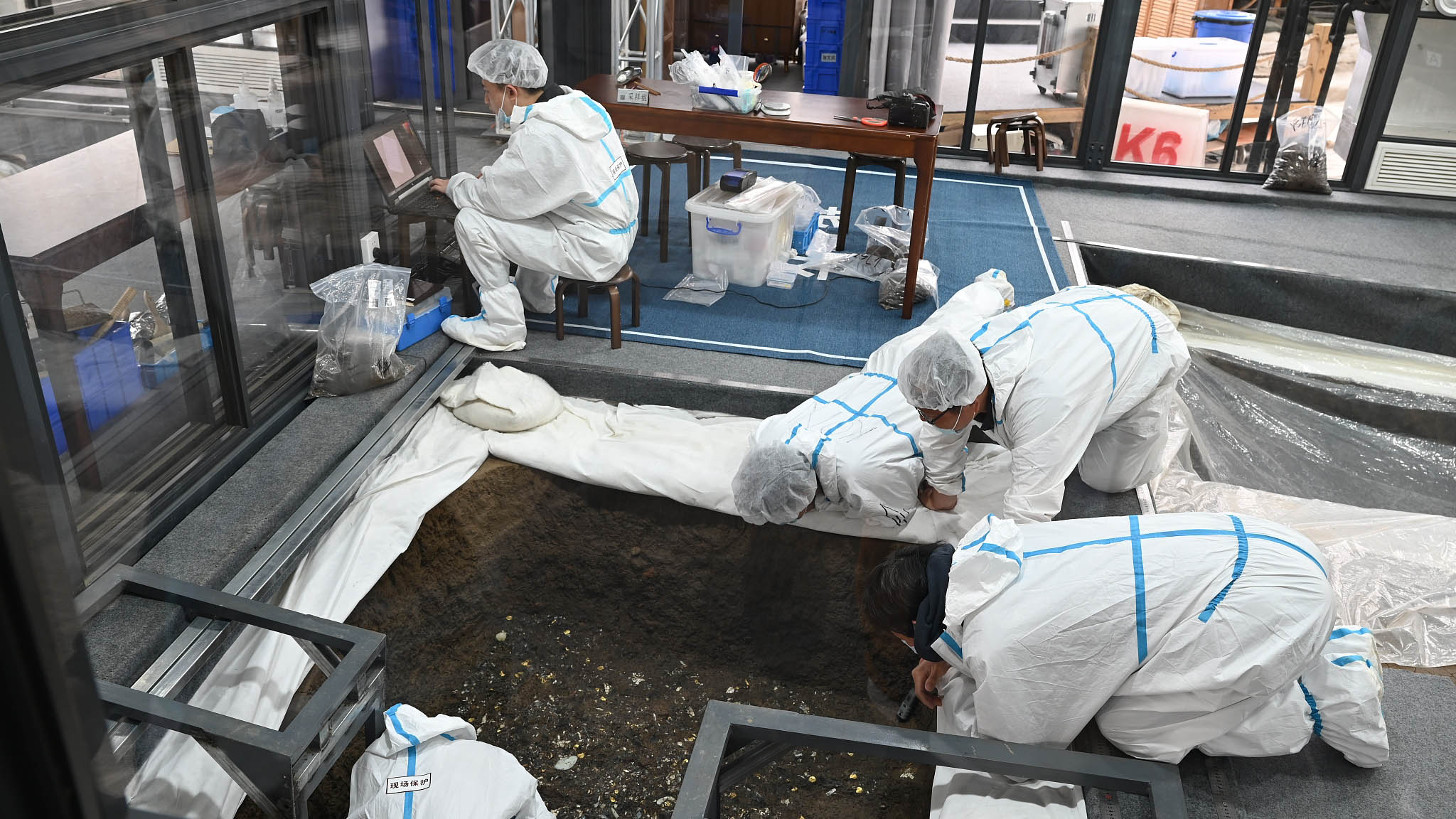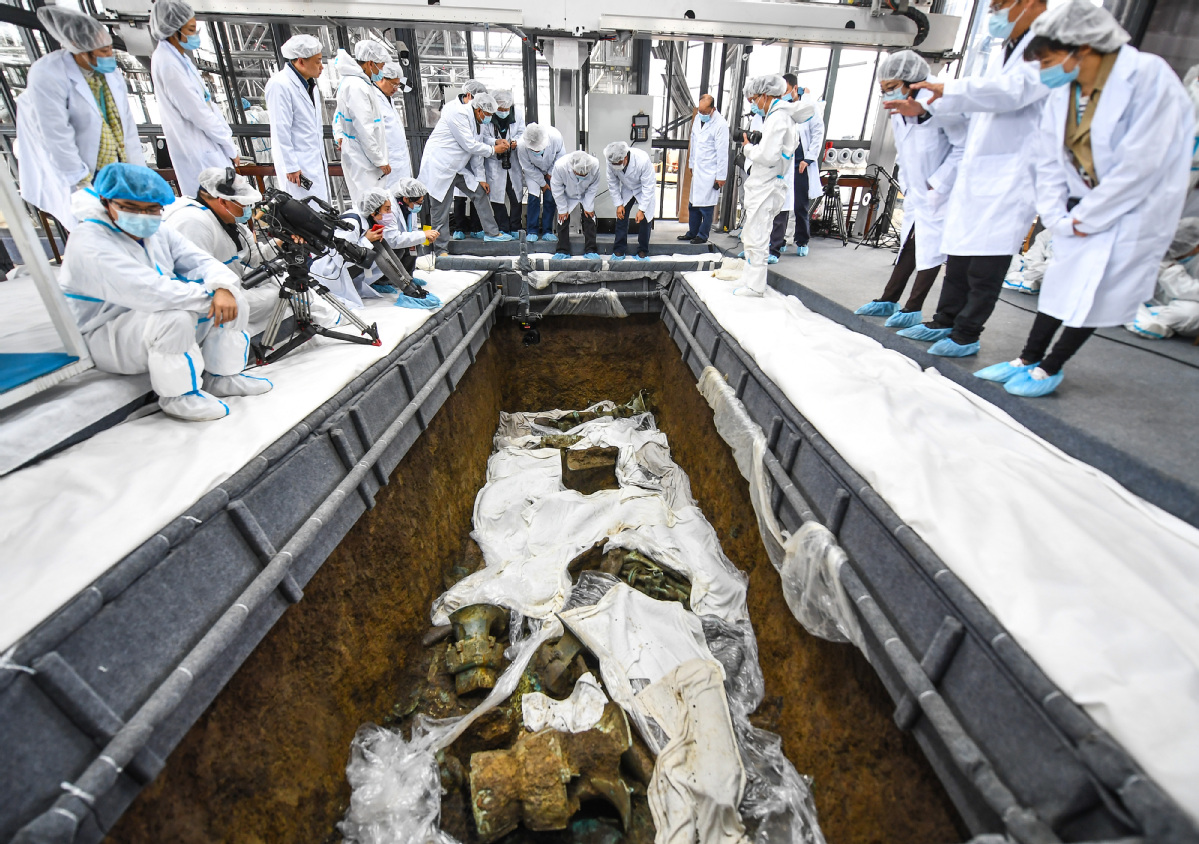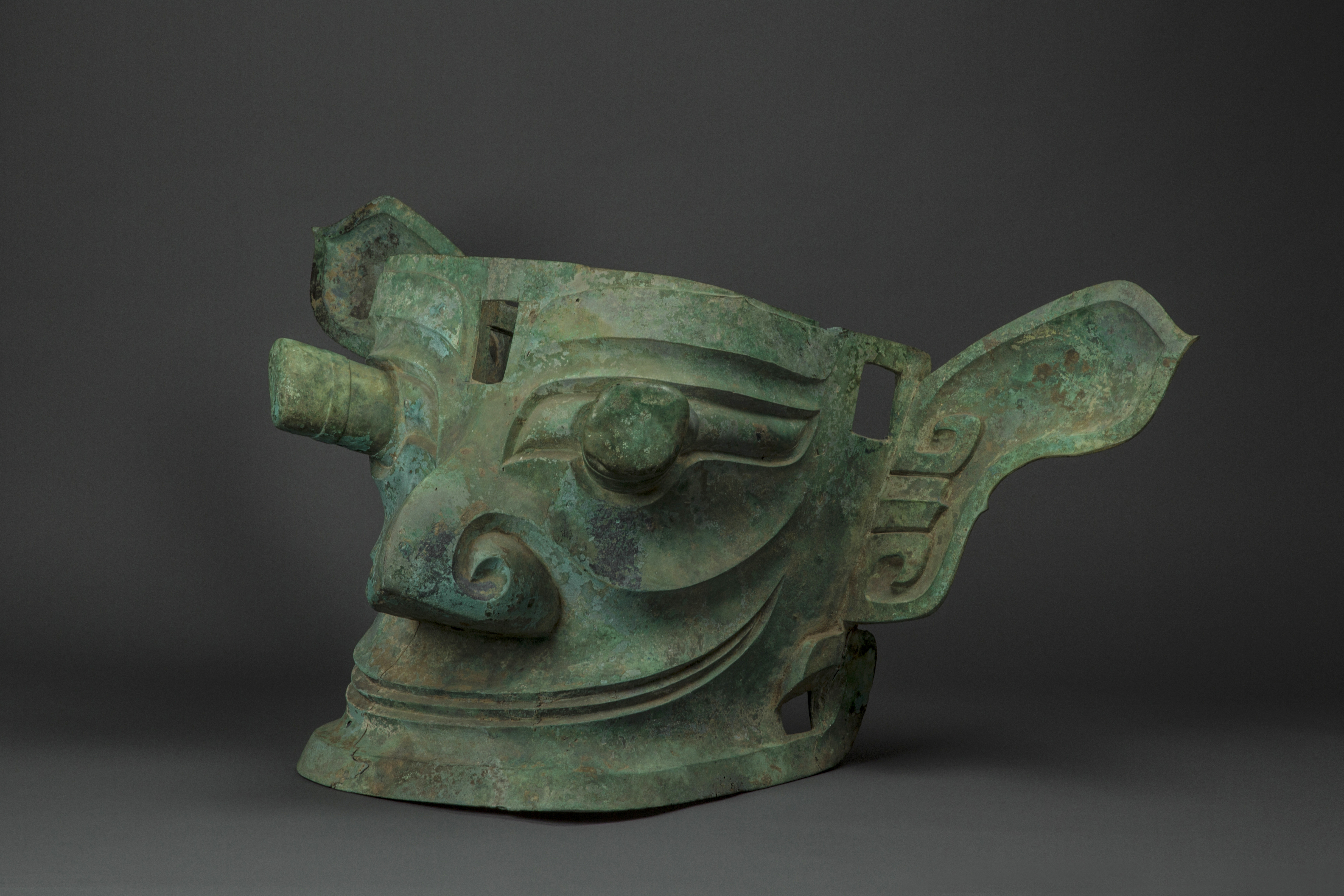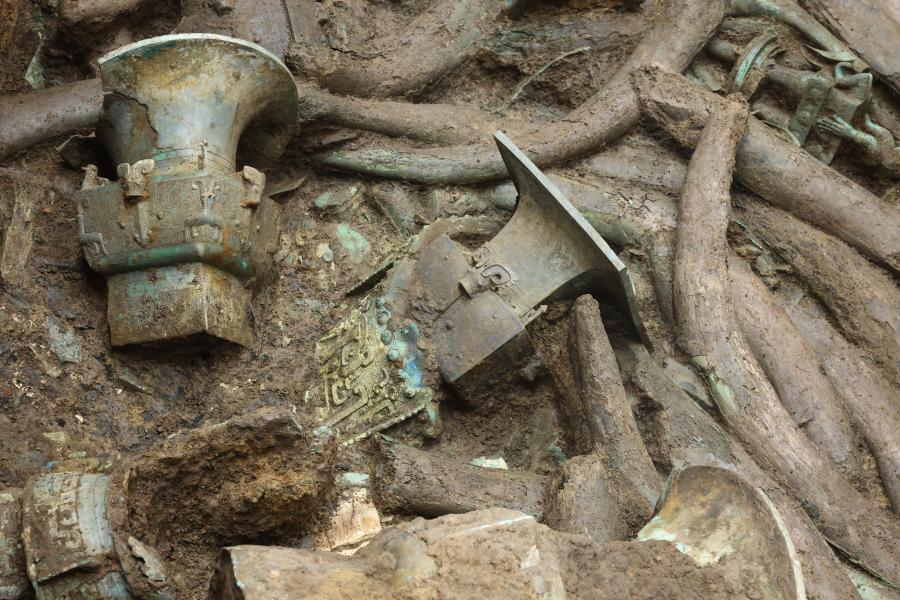00:40

The No. 4 sacrificial pit at the Sanxingdui Ruins site in southwest China's Sichuan Province can be traced back to the late Shang Dynasty (1600-1046 BC), provincial archaeological authorities said on Tuesday as the excavation work on the ground continues.
Preliminary radiocarbon dating – a method to determine an object's age – on samples unearthed from the hole confirmed that it was dug between 1199 BC and 1017 BC, which means it could be between 3,000 to 3,200 years old, according to the Sichuan Provincial Cultural Relics and Archaeology Research Institute.
With excavation and archaeological research underway at Sanxingdui's six new sacrificial pits, more discoveries are expected to be uncovered.

Archaeologists study the No.3 sacrificial pit at the Sanxingdui Ruins site in Guanghan, southwest China's Sichuan Province, March 19, 2021. /Xinhua
Archaeologists study the No.3 sacrificial pit at the Sanxingdui Ruins site in Guanghan, southwest China's Sichuan Province, March 19, 2021. /Xinhua
Largest-to-date bronze mask expected to be unearthed from No.3 pit
A giant bronze mask, estimated to be 135 centimeters in width and 74 centimeters in height, has been located at the No. 3 sacrificial pit and awaits excavation.
Archaeologists believe that it might be larger than the largest unearthed bronze mask, which is currently on display at the Sanxingdui Museum. That one is 138 centimeters wide and 66 centimeters high and was unearthed from pit No. 2 in 1986.

The largest unearthed bronze mask from the No. 2 sacrificial pit of the Sanxingdui Ruins site in Guanghan, southwest China's Sichuan Province. /Sanxingdui Museum
The largest unearthed bronze mask from the No. 2 sacrificial pit of the Sanxingdui Ruins site in Guanghan, southwest China's Sichuan Province. /Sanxingdui Museum
So far, a total of 109 bronze wares, 127 ivory items and eight jade artifacts have been discovered at pit No. 3, according to the archaeologists at the site.
On Monday, the largest bronze zun (drinking vessel) from the Sanxingdui site was excavated from the same pit. Cleaning and restoration work is underway.

A large number of bronze wares and ivory items have been found at the No. 3 sacrificial pit of the Sanxingdui Ruins site in southwest China's Sichuan Province. /Xinhua
A large number of bronze wares and ivory items have been found at the No. 3 sacrificial pit of the Sanxingdui Ruins site in southwest China's Sichuan Province. /Xinhua
Ancient dagger-axes found at pit No. 8
The No. 8 sacrificial pit at the southwestern part of the archaeological site is the largest in size, measuring 5.1 meters in length and 3.8 meters in width. It covers an area of nearly 20 square meters – five times that of pit No. 5.
Altogether nine dagger-axes, including eight made of stone and one bronze, have been found at pit No. 8, most of which are in good shape. The largest stone dagger-axe among them is 35 centimeters long and 10 centimeters wide.
Dagger-axe, or ge in Chinese, is a type of weapon that originated in the Xia Dynasty (around 2070-1600 BC) – the first dynasty recorded in ancient China. Bronze and jade ones were later made for ceremonial use.
So far, no ivory artifact has been located at the pit, according to archaeologists at the site, who expect to find a large number of metallic relics instead.

Archaeologists work at a sacrificial pit of the Sanxingdui Ruins site in southwest China's Sichuan Province, March 19, 2021. /Xinhua
Archaeologists work at a sacrificial pit of the Sanxingdui Ruins site in southwest China's Sichuan Province, March 19, 2021. /Xinhua
Located in the city of Guanghan, some 40 kilometers from the provincial capital Chengdu, the Sanxingdui site is regarded as one of the greatest archaeological discoveries in the 20th century. The excavation has lasted for nearly 100 years since its initial discovery in the late 1920s.
In 1986, archaeologists found two large-scale sacrificial pits and unearthed thousands of rare treasures. Six more pits were found between November 2019 and May 2020.
More than 500 pieces of cultural relics have been unearthed from these six pits, including a large gold mask, bird-shaped gold ornaments, ivory, as well as bronze and jade wares.

